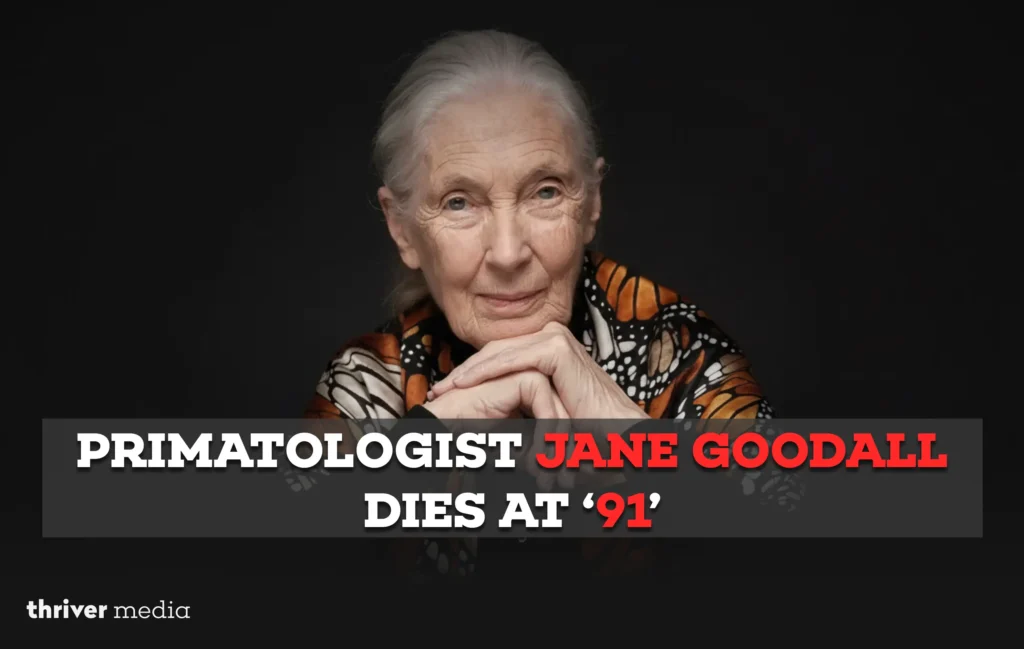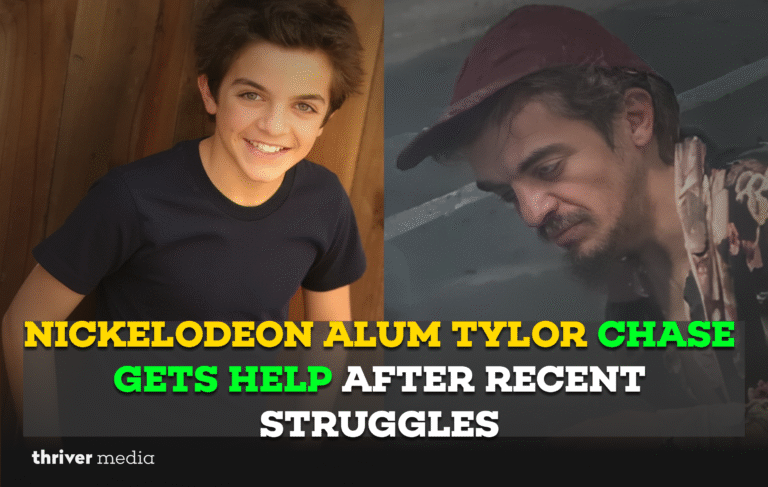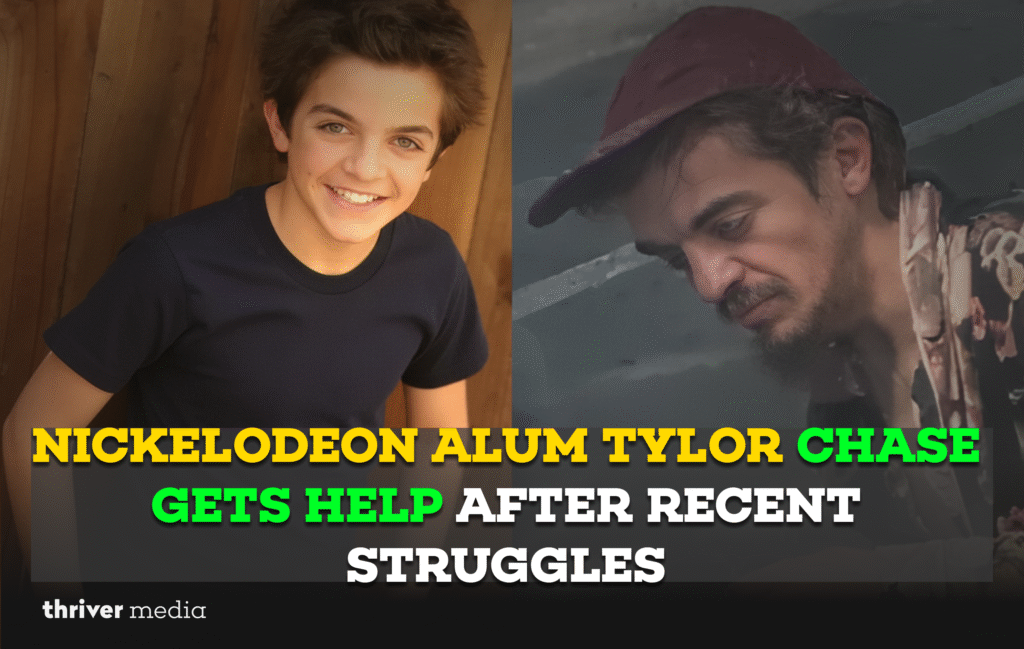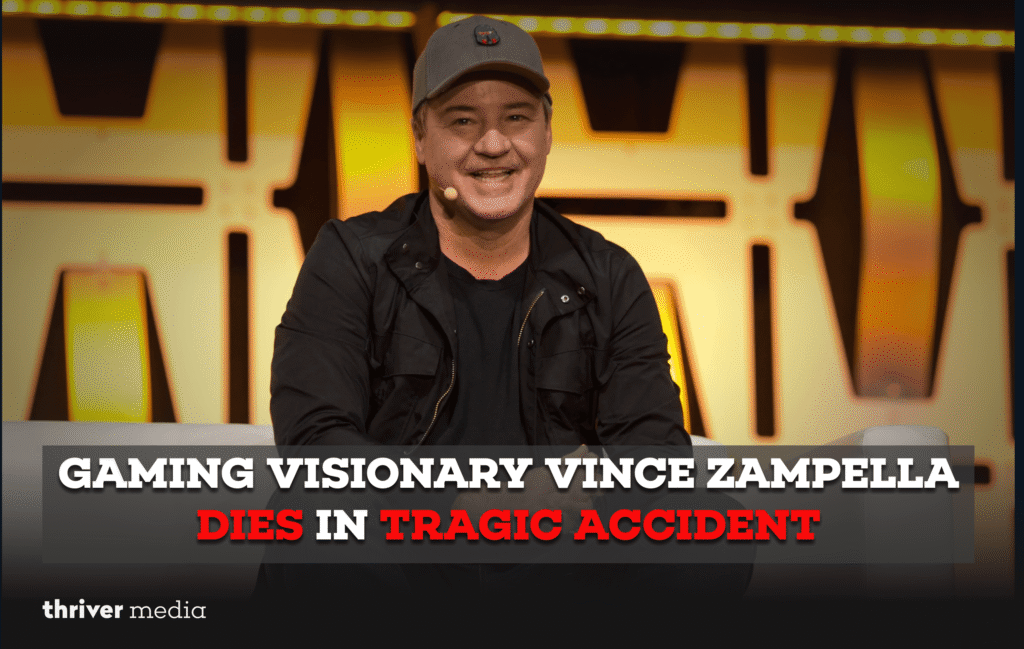The world-famous scientist and conservationist, primatologist Jane Goodall, who was on a speaking tour in California, died of natural causes. She was well-known for her revolutionary studies on chimpanzees and her environmental advocacy.

At age 91, Dr. Jane Goodall, a trailblazing primatologist who revolutionized our knowledge of animal behavior and rose to prominence as one of the most adored environmentalists in the world, passed away on Wednesday. Her remarkable legacy blurred the boundaries between people and animals, and her institute verified that she died of natural causes while on a speaking tour in California.
A Revolutionary Approach to Science
Primatologist Jane Goodall’s methodology marked a dramatic departure from traditional scientific observation. Arriving in Tanzania’s Gombe Stream Chimpanzee Reserve in 1960 at just 26 years old—with no formal college degree—she immersed herself in the chimpanzees’ world rather than studying them from a distance.
Her groundbreaking discoveries challenged fundamental assumptions about human uniqueness:
- She observed chimpanzees creating and using tools—stripping twigs to fish for termites
- She documented them hunting and eating meat
- She recorded complex emotions, personalities, and family bonds
- She gave them names rather than numbers, humanizing them in ways that initially drew scientific criticism
“Dr. Goodall’s discoveries as an ethologist revolutionized science, and she was a tireless advocate for the protection and restoration of our natural world,” her institute said in a statement.
Jane Goodall’s Cause of Death and Final Days
The cause of primatologist Jane Goodall’s death was confirmed as natural causes. She died while actively engaged in her life’s work—a speaking tour in the United States. Remarkably, she had been scheduled to meet with students and teachers in Pasadena on Wednesday to launch the planting of 5,000 trees around wildfire burn zones.
Her death was announced to the organizers just before the event started. Spokesman Shawna Marino stated, “I don’t think there’s any better way to honor her legacy than having a thousand children gathered for her.” After a moment of silence, the first tree was planted in Goodall’s honor.
Even into her 90s, Goodall maintained an exhausting travel schedule of nearly 300 days per year, only slowing when the COVID-19 pandemic forced her to switch to virtual appearances.
From Childhood Dreams to Scientific Legacy
Jane Goodall, who was born in London in 1934, developed an early fascination with animals. After Jane, then four, spent hours hiding in a henhouse to watch a chicken lay an egg, her mother encouraged her scientific curiosity.
“I always am amazed at how similar we are to chimpanzees and, for that matter, other animals, too—sharing emotions like fear and pain and anger and things like that,” Goodall said during interviews.
She started her trip to Africa by saving money while working as a secretary. She was hired as an assistant secretary by famed anthropologist Louis Leakey, who eventually decided to have her research chimps because he “wanted an open mind.” To research great apes, Leakey particularly chose three women, known as “Leakey’s Angels”: Goodall studied chimpanzees, Dian Fossey studied gorillas, and Birutė Galdikas studied orangutans.
Jane Goodall’s Family and Personal Life
The primatologist Jane Goodall’s family included two marriages that both supported and were shaped by her work. She married wildlife photographer Baron Hugo van Lawick in 1964 after National Geographic sent him to document her research. Their son, Hugo, was born in 1967.
“It was thanks to his photos and film that everything I was saying about the chimps was corroborated,” Goodall said of her first husband. Their marriage ended in 1974, partly due to career demands that kept them apart.
In 1975, she married Derek Bryceson, director of Tanzania’s national parks, who she said was crucial to preserving Gombe. “There wouldn’t be a Gombe today,” she noted. Bryceson died of cancer in 1980 after five years of marriage, leaving Goodall a widow for 45 years.
Global Impact and Recognition
Jane Goodall’s influence extended far beyond academic circles. Her work reached millions through National Geographic coverage, documentaries, and her extensive public speaking. She received numerous honors, including:
- Dame of the British Empire (2004)
- UN Messenger of Peace (2002)
- Templeton Prize (2021)
- Presidential Medal of Freedom (2025)
In recent years, Mattel honored her legacy with a Jane Goodall Barbie doll as part of their “Inspiring Women” series, introducing her story to new generations.
Her Jane Goodall book, “In the Shadow of Man,” became a classic, detailing her early years at Gombe. The Jane Goodall Institute, founded in 1977, continues her conservation work worldwide.
Transformation from Scientist to Activist
After going to a conservation conference in 1986, Goodall experienced a major change. “As a scientist, I attended the conference. “As an activist, I departed,” she stated.
Through her Roots & Shoots youth program and climate advocacy, she devoted the last years of her life to environmental education. She constantly stressed hope despite the sobering facts of environmental degradation.
“If one wants to reach people, if one wants to change attitudes, you have to reach the heart,” she stated on the “Hopecast” audio podcast. “You can reach the heart by telling stories, not by arguing with people’s intellects.”
FAQs
Jane Goodall died from natural causes at age 91 while on a speaking tour in California.
The official Jane Goodall cause of death was natural causes, according to her institute.
Yes, Mattel released a Jane Goodall Barbie in 2022 as part of their Inspiring Women series, featuring the scientist with a chimpanzee and a notebook.
Her most influential Jane Goodall book is “In the Shadow of Man,” along with many other works about her research and conservation efforts.
Yes, she had one son, Hugo, with her first husband, Baron Hugo van Lawick. The Jane Goodall family also includes her extensive network of conservation colleagues and the global Roots & Shoots community.
She was 26 years old when she began her groundbreaking work at Gombe in 1960.
The passing of Jane Goodall marks the end of an era, but her legacy continues through the millions she inspired to protect our planet and all its inhabitants.
Disclaimer: The news and information presented on our platform, Thriver Media, are curated from verified and authentic sources, including major news agencies and official channels.
Want more? Subscribe to Thriver Media and never miss a beat.















